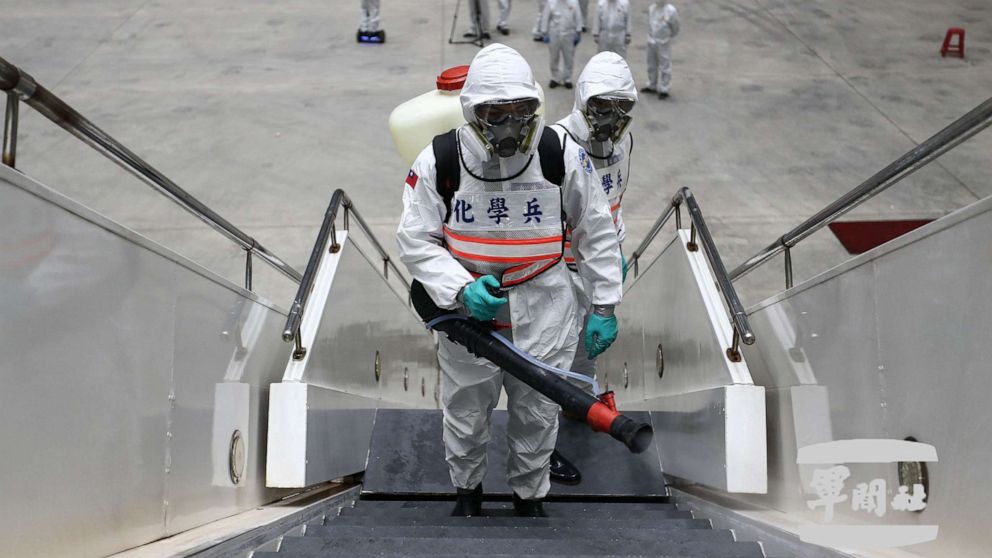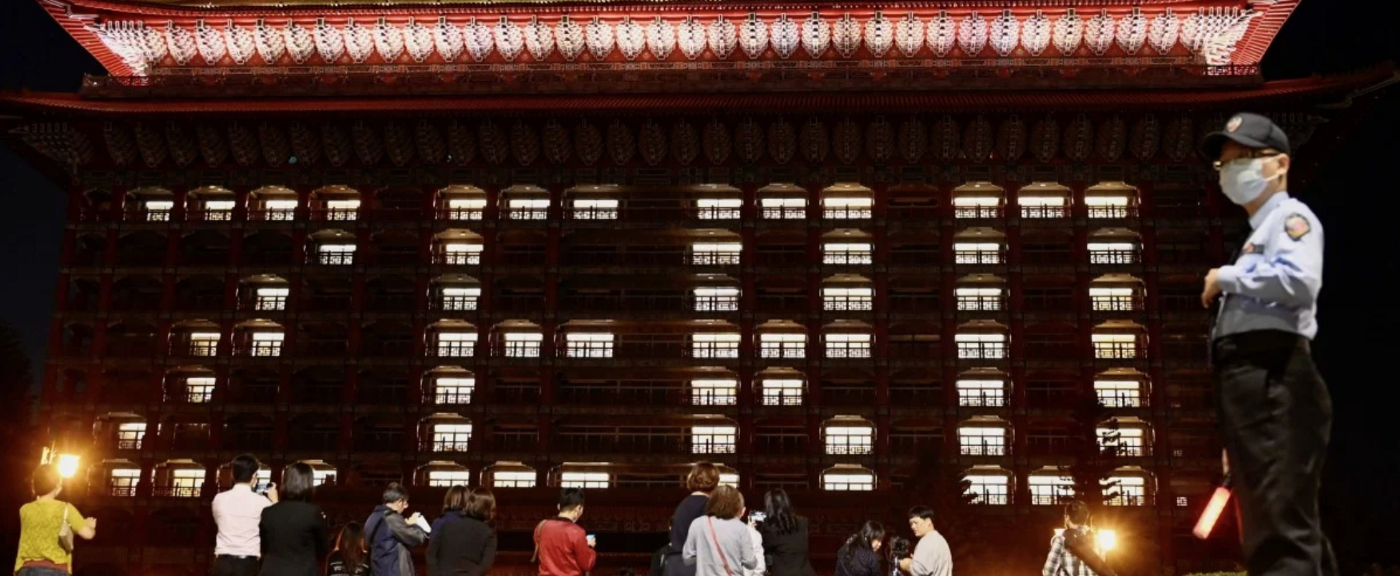Ya-wen Lei examines how Taiwan as a democratic developmental and welfare state managed to contain the outbreak of Coronavirus. This post first appeared in Contexts on March 25, 2020.
Despite its exclusion from the World Health Organization (WHO) and its geographic proximity to China, Taiwan has been doing relatively well in responding to the COVID-19 outbreak. The country has 23 million citizens, of which 850,000 reside in China (Wang, Ng and Brook 2020). There are 216 confirmed cases at the time of this writing. Taiwan has contained the spread of COVID-19 from China quite successfully despite being faced with the challenge of continuingly containing the outbreak after COVID-19 spread widely in the world. I argue that the Taiwanese collective memory of the 2003 Severe Acute Respiratory Syndrome (SARS) outbreak and the country’s democratic developmental and welfare state explain Taiwan’s swift and effective response to the COVID-19 outbreak.
Between November 2002 and July 2003, an outbreak of SARS occurred in southern China. In Taiwan, the first case was reported in March 2003. The outbreak in Taiwan caused 668 probable cases with severe deterioration of pulmonary function and 181 deaths. As an effort to contain the epidemic, the lockdown of a hospital in Taipei led to severe long-term physical and mental illness among patients and healthcare workers quarantined in the hospital (Chen et al. 2005). Due to the collective memory of the tragedy, there is a consensus among Taiwanese — no matter their political orientation — about how easily an epidemic can become out of control. Since the SARS crisis, state and society actors in Taiwan have also improved governmental and societal responses to epidemics. The collective memory explains the swift reaction of the government to the COVID-19 outbreak, from border control to case identification and tracing, containment, and resource allocation (Wang, Ng and Brook 2020). Such memory also accounts for the societal support of governmental action.

Taiwan is also a classic example of the developmental state (Evans 1995). The state played a critical role in the country’s industrial transformation. Peter Evans (1995) famously argued that autonomous bureaucracy and connections between the state and business actors explain the success of late industrial transformation in several Asian countries. The legacy of Taiwan’s developmental state is reflected in the way the Taiwanese state has mitigated the shortage of masks amidst the COVID-19 outbreak. Because population density is high in Taiwan, Taiwanese rely on masks to protect themselves. Taiwanese also learned the importance of mask-wearing from their experience with SARS. There has been a shortage of masks in Taiwan after the COVID-19 outbreak, as Taiwan depends on imports from China. To address the shortage, the Taiwanese developmental state first prohibited the export of masks. Furthermore, it has mobilized manufacturers and coordinated companies and technicians to set up 92 production lines and, thereby, largely mitigated the shortage of masks.
In their attempt to broaden the concept of development beyond economic growth, Evans and Heller (2018) argue that there can be different configurations of “embeddedness” — ties between state and non-state actors. They also point out that non-state actors can include civil society actors. To address the panic-buying of masks, the Taiwanese developmental state developed an IT system based on its national health insurance data to distribute masks swiftly. The development of such a system and apps (such as apps that show the location of pharmacies where masks are available) was based on the participation of state actors and volunteer software engineers. The collaboration of state and non-state actors has also helped to combat misinformation about the COVID-19 outbreak. Although Taiwan is a politically polarized society, the capacity of the developmental state and the embeddedness of the state in society has strengthened the trust of citizens in the government.
Taiwan’s welfare state, especially its national health insurance system, has also strengthened the country’s capacity to respond to the epidemic crisis. Similar to the situation in South Korea, the process of democratization in Taiwan imposed pressure on politicians to establish a welfare state (Peng and Wong 2008). In 1995, Taiwan replaced a previous patchwork of separate social health insurance funds with the National Health Insurance Program (NHI) (Cheng 2003). Although the NHI faces challenges in balancing the program’s budget, improving the quality of health care, and achieving higher cost-effectiveness, the program enjoys high public approval and delivers affordable and efficient health care to all Taiwanese. Different from other single-payer systems, such as those in England and Canada, the NHI does not have the problem of long waiting times for patients (Cheng 2015). Also, the NHI database serves as a valuable resource for research (Chen et al. 2011). As such, NHI provides a robust infrastructure for Taiwan to handle the COVID-19 outbreak. As mentioned, the Taiwanese state has also relied on the NHI database to build the IT system that facilitates the distribution of masks. Essentially, the national healthcare infrastructure built by the welfare state has laid a solid foundation to cope with the epidemic crisis.
Finally, the democratic political regime empowers citizens to hold the government accountable. The Taiwanese state has provided transparent and reliable statistics. Civil society in Taiwan has grown tremendously in the process of the country’s democratization. Amidst the COVID-19 outbreak, there have been public concerns and criticisms about privacy protection, protection of human rights, and how the government treats Taiwanese citizens who reside in China, naturalized citizens originating from China, international students, and undocumented migrant workers from Southeast Asia. For example, sociologists in Taiwan, the Taiwan International Workers’ Association, and various human rights organizations suggested the Taiwanese government incorporate, rather than excluding or punishing undocumented workers, so that undocumented workers would have the courage and resources to seek medical treatment. The government responded that it would not crackdown on undocumented workers.
To conclude, the democratic developmental and welfare state that emerged in Taiwan’s industrial transformation and democratization and the collective memory of SARS have helped the country to cope with the COVID-19 crisis. The Taiwanese case shows that a society does not need an authoritarian state to respond to a public health crisis. In fact, as the case of China demonstrates, the Chinese state blocked information and delayed governmental and societal responses to the COVID-19 outbreak in the beginning of the outbreak, making draconian ways of dealing with the crisis the only option. Evidence also suggests that the Chinese state has negatively influenced the operation and accountability of the WHO. The Taiwanese case further demonstrates the critical importance of building a welfare state, which takes a long time, tremendous resources, and political and societal will to accomplish. In the context of the United States, many people and media blame the current administration for mishandling the current crisis. Although such criticism is absolutely valid, the problem of the American state lies much deeper, as there is no societal consensus to improve the country’s welfare system; moreover, there is an unwarranted belief in market solutions to providing essential public goods and a long-term decline of trust in government.
References
- Chen, Kow-Tong, Shiing-Jer Twu, Hsiao-Ling Chang, Yi-Chun Wu, Chu-Tzu Chen, Ting-Hsiang Lin, Sonja J. Olsen, Scott F. Dowell and Ih-Jen Su. 2005. “SARS in Taiwan: An Overview and Lessons Learned.” International Journal of Infectious Diseases 9(2):77–85.
- Chen, Yu-Chun, Hsiao-Yun Yeh, Jau-Ching Wu, Ingo Haschler, Tzeng-Ji Chen and Thomas Wetter. 2011. “Taiwan’s National Health Insurance Research Database: Administrative Health Care Database as Study Object in Bibliometrics.” Scientometrics 86(2):365–80.
- Cheng, Tsung-Mei. 2003. “Taiwan’s New National Health Insurance Program: Genesis and Experience So Far.” Health Affairs 22(3):61–76.
- Cheng, Tsung-Mei. 2015. “Reflections on the 20th Anniversary of Taiwan’s Single-Payer National Health Insurance System.” Health Affairs 34(3):502–10.
- Evans, Peter. 1995. Embedded Autonomy: States and Industrial Transformation. Princeton, NJ: Princeton University Press.
- Evans, Peter and Patrick Heller. 2018. “The State and Development.” Vol. 9292565540. WIDER Working Paper.
- Peng, Ito and Joseph Wong. 2008. “Institutions and Institutional Purpose: Continuity and Change in East Asian Social Policy.” Politics & Society 36(1):61–88.
- Wang, C. Jason, Chun Y. Ng and Robert H. Brook. 2020. “Response to Covid-19 in Taiwan: Big Data Analytics, New Technology, and Proactive Testing.” The Journal of the American Medical Association. doi: 10.1001/jama.2020.3151.


